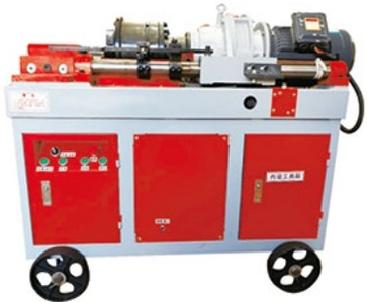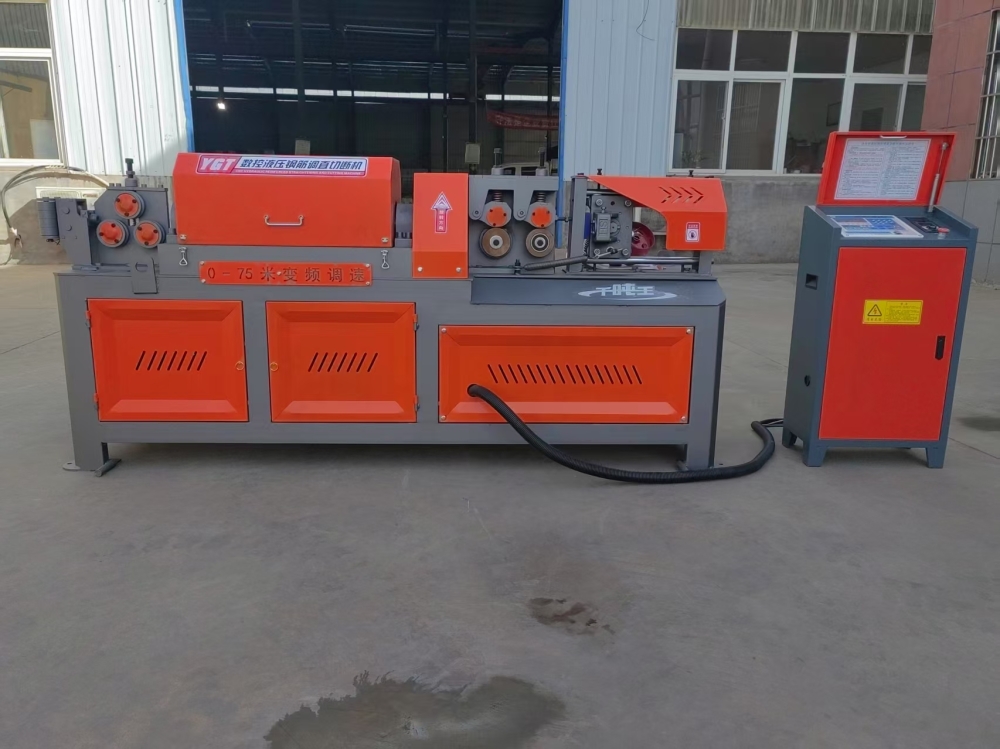Rebar cutting machine
A rebar cutting machine is a fundamental piece of equipment in infrastructure engineering for rebar processing. It is mainly used for the precise cutting of various rebars and profiles, including round steel, threaded steel, flat steel, and angle steel.

A rebar cutting machine is a fundamental piece of equipment in infrastructure engineering for rebar processing. It is mainly used for the precise cutting of various rebars and profiles, including round steel, threaded steel, flat steel, and angle steel. The machine adopts a motor-driven + crank-connecting rod transmission or hydraulic drive structure. The machine body is constructed with high-strength cast or welded steel structures, ensuring high stability. It is equipped with an adjustable positioning baffle, blade protection device, and overload protection system. Processing is controlled via a foot switch or CNC panel. The blades are made of high-hardness alloy material, providing strong cutting force and a clean cut. It supports cutting Φ6-50mm round steel, threaded steel, and various profiles, with a cutting length error controlled within ±1mm and a fast cutting speed. Compared to manual cutting, it offers advantages such as high efficiency, good cut quality, and low labor intensity, solving the problems of poor dimensional accuracy and low efficiency associated with manual cutting. It is widely used in rebar processing plants for building construction, bridges, high-speed railways, tunnels, and other projects, and is an essential basic piece of equipment in rebar processing production lines.
Features
1. High Cutting Efficiency: The mechanical transmission model cuts Φ25mm threaded steel bars in just 1-2 seconds per bar, while the hydraulic model cuts Φ40mm steel bars in approximately 3-5 seconds per bar. It can process 1500-3000 bars in 8 hours, which is 8-10 times more efficient than manual cutting.
2. Excellent Cut Quality: The blades are made of Cr12MoV alloy, hardened to a hardness of HRC60 or higher, resulting in clean, burr-free, and deformation-free cuts, eliminating the need for secondary grinding.
3. Stable Cutting Precision: Equipped with an adjustable positioning baffle, the cutting length error is ≤±1mm, supporting batch cutting of fixed lengths to meet standardized engineering processing requirements.
4. Wide Applicability: It can cut Φ6-50mm round steel, threaded steel, as well as ≤16mm flat steel and ≤100×8mm angle steel, etc. Different specifications of steel bars can be adapted by changing the blades.
5. Simple and convenient operation: Mechanical models are controlled by a foot switch, while CNC models are equipped with a touch screen. Cutting lengths and quantities can be preset, and automatic counting is available. Even beginners can master operation within half an hour.
6. Comprehensive safety protection: Equipped with blade guards, an emergency stop button, and overload protection devices to prevent rebar springback and equipment overload damage, meeting GB/T 23484 safety standards.
7. Durable and reliable structure: The machine body is constructed of gray cast iron or thick steel plate welding, providing high rigidity and good shock resistance. Key transmission components use precision bearings, resulting in a low failure rate over long-term operation and a service life of 8-10 years.
8. Low maintenance costs: Blade replacement is convenient. A single set of blades can cut 5000-8000 Φ25mm rebars. Routine maintenance only requires periodic lubrication and tightening, resulting in low annual maintenance costs.
- Rebar threading machine Previous :
- Rebar bending machine Next :






